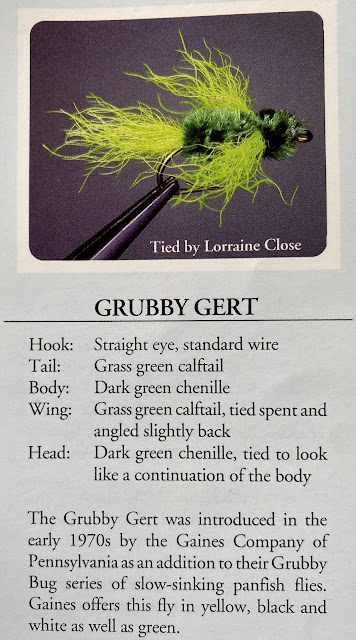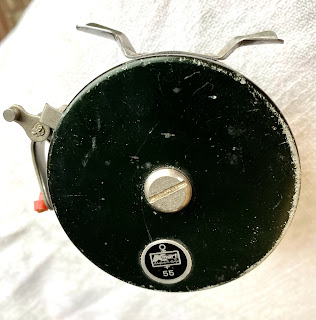by David Hutton
Palmetto Fly n Fish
January 22, 2022
I listlessly push the shopping cart up, and down, the aisles...
"We're just here for a few things," says my wife.
I hang on the shopping cart like a deflated beach toy, and the wheel knocks some more.
The store intercom crackles to life and shrieks, "Lori to customer service. LOOORRRIII TO SERVICE!"
I heave a sigh. The cart holds me up, as if it has a choice.
"There's always something else we just gotta have," I mutter.
"It never ends - it's always something else."
But then I remember... "Hey, there's a fishing section at this store, so there might actually BE something I should get!"
"Babe, can you take the cart?"
The hopeful tone in my voice is obvious; the wife recognizes it instantly.
"Yeah," I say, trying to sound nonchalant..."I'm just gonna swing by the sporting goods - I'll meet you in the dairy section."
Hey, milk and eggs are as good a place as any to meet back up, and there is no point lying to the woman... she already knows.
Passing hardware, and paint, and all that "guy stuff" that really means W-O-R-K, I finally arrive at the tackle section.
Here I am in my element. I breathe deeply and relax.
This is more like it...none of those paper towels, no carrots or silly produce stuff.
I look around and…
"Hey, wait a minute WHAT is THAT?"
Its round, and blue, and it is in the familiar Eagle Claw packaging. Just down from me, a guy and his little daughter are looking at the, "Frozen," fishing rods.
"Will you look at that?!" I say to him, a little too excitedly.
"You don't see these things much, nowadays."
He looks at me, and pushes the kid behind him.
There, on the shelf hanger in front of me, is an old-style plastic rotary dispenser. It has a blue bottom, and a sparkling clear top that spins and clicks as it goes around.
And the package says, "Bronze Aberdeen Hook Assortment"... and... dear God..., there are 144 of them in there!
Then the price hits me - $3.00
I keep talking, aloud.
“Check that out, will ya? $3.00?
That's only...wait...lemme think..."
Whipping out my cellphone, I work up a quick calculation.
"Dang, that's only 2.08 cents per hook!" I could have said, "2 cents each," but I'm impressed that I could figure out 2.08 cents per hook.....
'Frozen' guy leaves with his child - they go the other way.

The Package
That was before everything but the kitchen sink was put into carded blister packs.
"A lot of good flies can be tied with these, and they're only 2.08 cents per hook. These are coming with ME!"
I'm almost shouting now.
I am the King of Math. And they said I'd never use algebra...
When next I see her, the wife is in the paper towel section, of all danged places.
She greets me with that, "Uh-huh" look, and I casually toss the package of hooks into the cart.
The package itself is the usual challenge to open.
I grab a steak knife from the drawer, and manage to get the hook dispenser out without slicing my hand open.
These things are always glued together tighter than an otters pocket, aren't they?
The Dispenser
Lined up edge to edge, next to a dime, they look like this:

I shout aloud, "This is gonna work out!"
Perhaps only a fly tyer could get this excited about hooks.
The wife hears the commotion.
She pops her head around the corner and asks, "Your hooks are what you wanted?"
"Yes, indeed!” I try to sound knowledgeable, and explain…
"They're only TWO-POINT-ZERO-EIGHT cents per hook, there are 144 of them in a very cool and useful dispenser, and they're in three great panfish and bass sizes.
Oh yes, they're excellent."
"Thats nice, dear," she replies. “By the way... when we were in the produce section today, did you grab the carrots like I asked you to. I didn't see them when we got home...."
Carrots for cryin' out loud.
"It never ends," I mumble to myself. "It's always something else."
Date: January 22, 2022
Price: $3.00, plus tax
Quantity: 144 hooks, in a cool dispenser
Do you have questions, compliments, or suggestions?
If so, email me at...dahutist@gmail.com




















